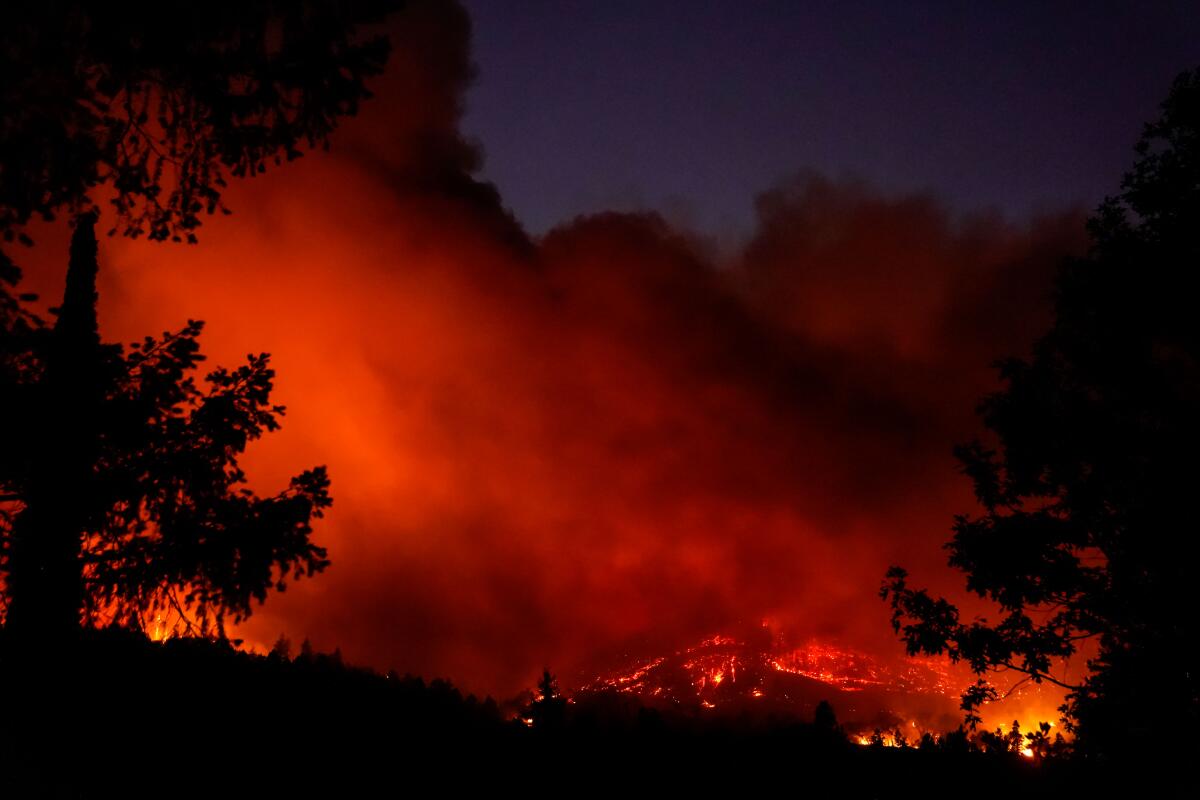Opinion: One surprising source of hope for climate change? Fiction

- Share via
As the climate crisis continues to reshape our world, climate fiction has become one of the fastest-growing genres in literature. But what happens when the catastrophes that dominate headlines become indistinguishable from plots of fiction?
During an era of rolling disasters, we might expect readers to seek comfort in escapist stories, and yet the literary marketplace continues to reward those engaging head-on with environmentalist themes. It might be a signal that climate fiction has become so convincingly nuanced that readers are turning to these stories to help them interpret our new reality.
Now often known as “cli-fi,” this once-nameless sci-fi sub-genre has evolved into a major, prizewinning literary movement. Cli-fi doesn’t have to be dystopian. But as our fictional dystopias begin to resemble our reality, and as reality feels increasingly dystopian, the climate crisis has taken root among the usual settings and categories of literature: city life, college towns, coming-of-age, infidelity, love, tragedy.
As novelist Lydia Millet wrote, the climate crisis is now a condition of human life. Through my own writing — which is often influenced by living in California, where we’re reminded daily of our environmental challenges — I’ve discovered that fiction can provide us a space in which to make meaningful and sustained contact with the current and possible effects of the climate crisis, in a way that news headlines can’t.
In the spring of 2019, I was struggling to write a since-discarded novel. Needing a change of scenery, I got in my car and drove up the coast, from Van Nuys all the way to Vancouver. I saw the snowy mountains and crystal-clear freshwater of Lake Tahoe; the rivers and gorges and waterfalls outside of Portland; the indomitable pine forests of Olympic National Park; the jungly rainforests of British Columbia.
Novelist Elvia Wilk highlights in her book of essays, “Death by Landscape,” that in fiction, the landscape is often in the background, with the characters in the foreground. On this journey, the landscape was suddenly in my foreground.
I hadn’t taken that road trip with the intention of writing about the environment, but the dystopian realities of living in Los Angeles — a city that often feels both like the starting block and the finish line of the climate crisis — caused me to wonder what life might look like if all that natural beauty vanished. I ended up writing a cli-fi novel, a speculative story that also felt entirely plausible. Too real, even.
While trying to get that book published, I was often asked, “So, is this serious literature? Or sci-fi? Or is it that new one . . . cli-fi?”
I answered, “Why not all three?”
Some recent examples in this genre are Cormac McCarthy’s post-apocalyptic, biosphere-less “The Road”; Jesmyn Ward’s portrait of the days preceding Hurricane Katrina, “Salvage the Bones”; and Ursula K. Le Guin’s universe of interplanetary species, the Hainish novels, which were popular sci-fi books of the 1960s and ’70s. But many works with cli-fi elements challenge our conception of sci-fi versus “serious” literature and might even obliterate the bounds of genre altogether: Take Jonathan Franzen’s “Freedom” (for all that hinges on the conservation of an endangered bird species), and just about anything by George Saunders (for all his invented technologies that change the rules of society).
Any genre that can contain such breadth and depth of literature is no longer a trend. And as our everyday lives have become inextricably entangled in futuristic technologies and crises, sci-fi and cli-fi have become sorts of new realism — too-realism, if you will. How do we situate human hardship for the sake of narrative, when human activity has put so many nonhuman lives in danger? Perhaps cli-fi can help us rethink familiar dichotomies — human versus nature, utopia versus dystopia, savior versus destroyer — and expand the possibilities of storytelling.
One risk of tackling inherently political subjects such as the climate crisis is that writers can fall into didacticism. Le Guin, for instance, who wrote many enduring works of fiction, was critical of her own 1972 cli-fi novella, “The Word for World Is Forest,” later calling it “strident” and a “preachment.” It’s a thinly veiled environmentalist parable, in which her characters take a back seat to the message, and it suffers from one of the steepest pitfalls of cli-fi: heavy-handedness. What good is fiction when it reads just like one of the headlines?
Neither fiction nor the news should lead readers to imagine the worst-case-scenario for its own sake (climate psychologist Jessica Kleczka warns against the pernicious effects of “doomism”). Rather, when cli-fi succeeds, the reader will halt with recognition. The story will heighten our awareness of our own experience of the world, and we’ll consider reality a bit more keenly before reading on.
While reading Jenny Offill’s 2020 “Weather,” a slim but forceful novel about a librarian who goes down the rabbit hole of disaster psychology as she envisions the end of the world, I felt this recognition and wondered whether works of climate fiction might someday include a trigger warning for inducing eco-anxiety.
For now, the greatest threat to cli-fi is probably oversaturation, if publishers fatigue readers with books that resemble the never-ending stream of disastrous headlines. But as long as the climate crisis is a condition of everyday life, stories that feel too real won’t be going anywhere — whether we call them sci-fi, cli-fi or “serious” literature. We’ll need them as a record of humanity and how we either failed or made it through.
Daniel Vitale is a writer in Los Angeles and author of the novel “Orphans of Canland.”
More to Read
A cure for the common opinion
Get thought-provoking perspectives with our weekly newsletter.
You may occasionally receive promotional content from the Los Angeles Times.










